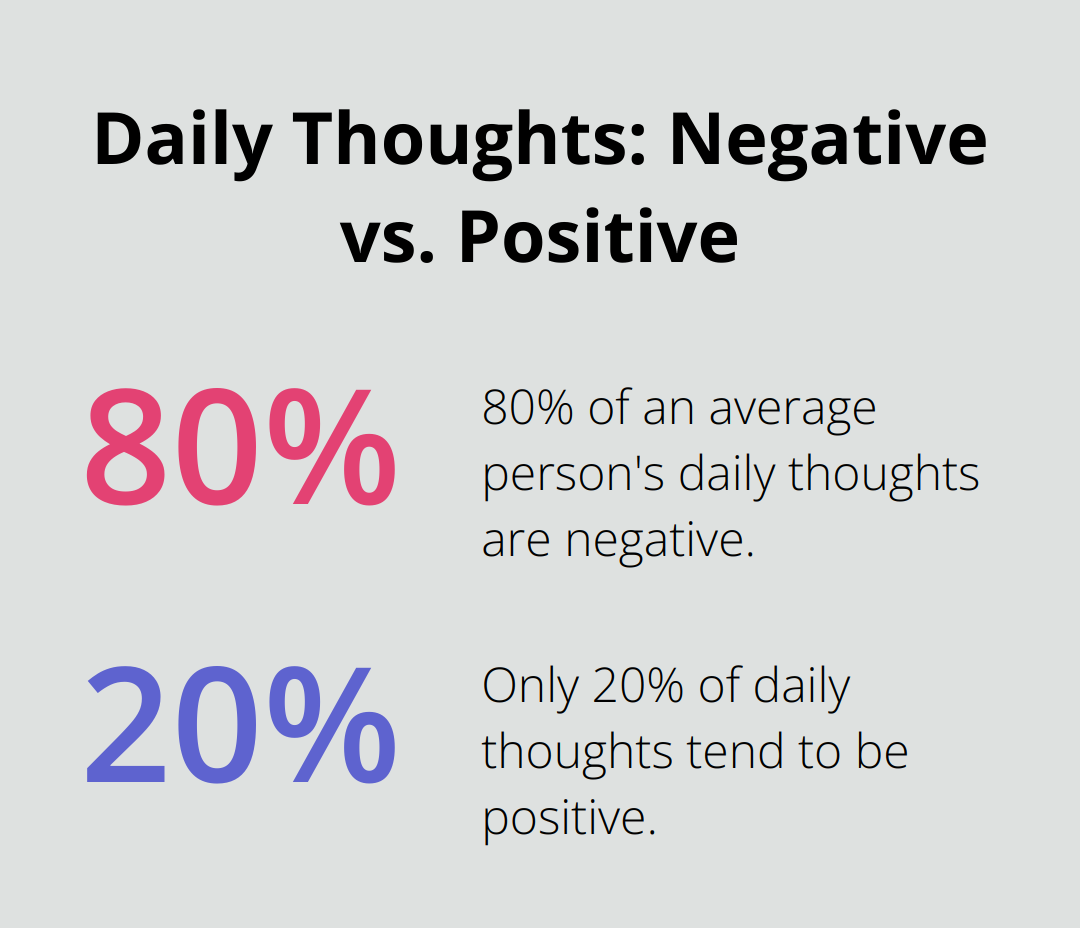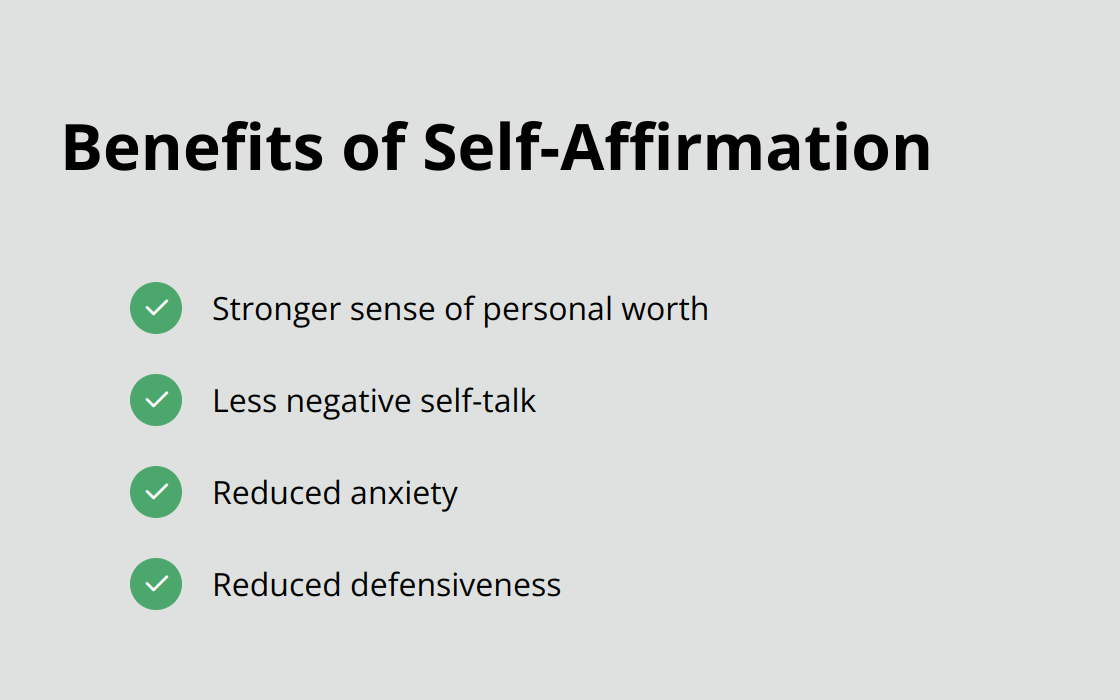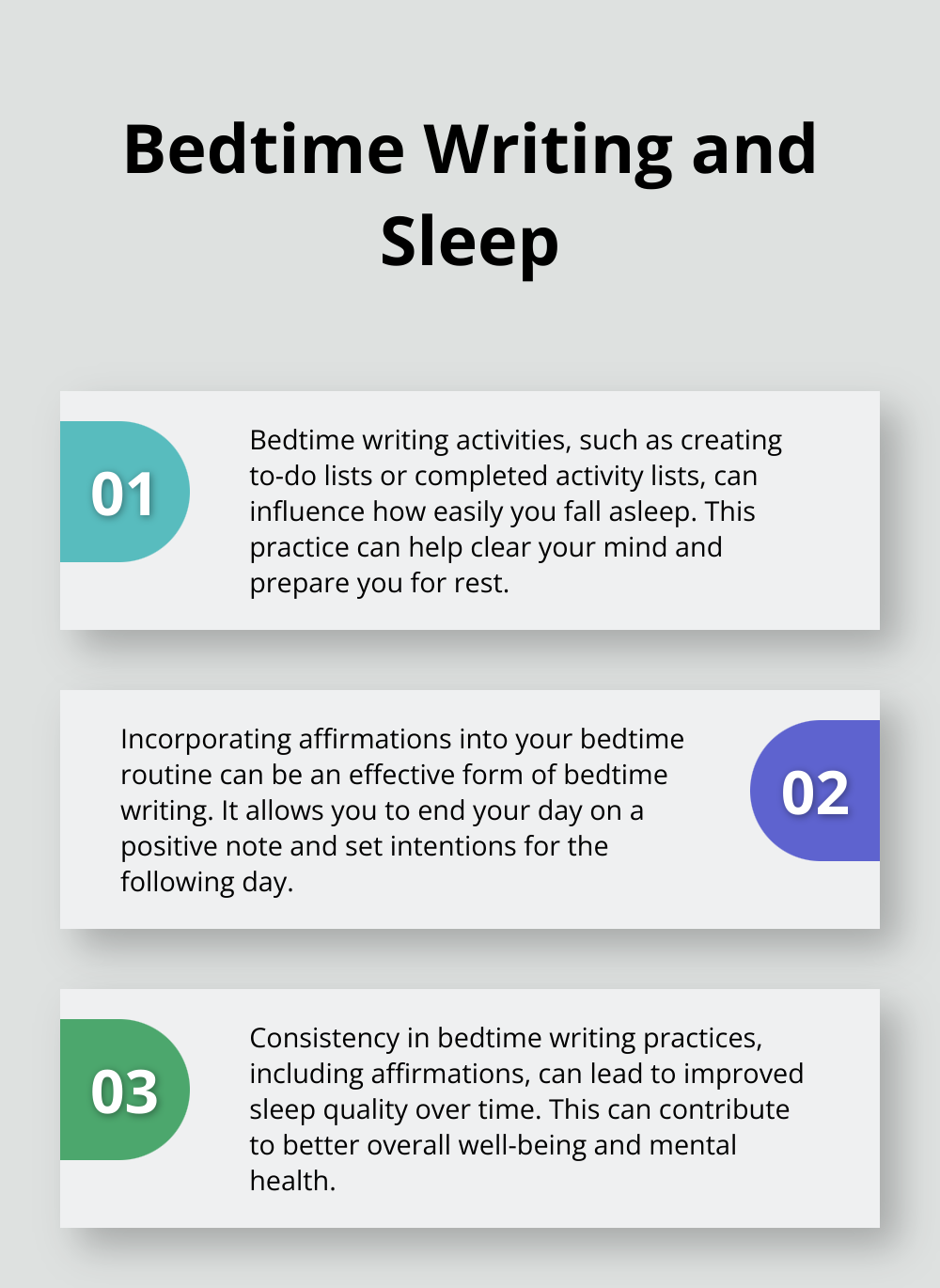At Global Positive News Network, we believe in the power of positive thinking to transform lives. Daily affirmations are a simple yet effective tool to cultivate optimism and self-belief.
In this post, we’ll explore how to harness the potential of affirmations, from understanding their scientific basis to implementing them in your daily routine. We’ll even touch on how you can incorporate affirmations into your daily podcast listening for a boost of positivity.
What Are Daily Affirmations?
Definition and Purpose
Daily affirmations are positive statements individuals repeat to themselves regularly. These powerful phrases challenge and overcome self-sabotaging and negative thoughts. They serve as a tool to transform mindsets and lives.
The Science of Positive Self-Talk
Research from the National Science Foundation reveals that an average person has about 12,000 to 60,000 thoughts per day. Surprisingly, 80% of these thoughts are negative. Self-affirmation theory posits that people are motivated to maintain a positive self-view and that threats to perceived self-competence are met with resistance.

A study published in Social Cognitive and Affective Neuroscience found that self-affirmation practice is associated with neural activity in areas of the brain involved in self-related information processing. This activation may help counteract the brain’s natural negativity bias.
Practical Benefits
Incorporating affirmations into your daily routine can yield numerous benefits. A study in the Personality and Social Psychology Bulletin revealed that participants who used self-affirmations showed increased problem-solving abilities under stress.
Moreover, research from Carnegie Mellon University demonstrated that self-affirmation can lower stress levels and improve academic performance. Students who practiced affirmations before a high-stakes exam scored higher than those who didn’t.
Starting Your Affirmation Practice
To begin, choose one or two affirmations that resonate with you. Write them down and place them where you’ll see them often – on your bathroom mirror, your desk, or as a phone wallpaper.
Repeat your chosen affirmations out loud every morning. The act of speaking reinforces the message in your mind. As you become more comfortable, gradually increase the number of affirmations you use.
Consistency is key. A study in the European Journal of Social Psychology found it takes an average of 66 days for a new habit to become automatic. Try to stick with your affirmation practice, even if you don’t see immediate results.
Sharing Your Journey
Many individuals find it inspiring to share their affirmation journey with others. It’s remarkable to see how these simple yet effective tools can create ripples of positivity in communities worldwide. (You might even consider sharing your experiences on platforms like Global Positive News Network, which focuses on spreading uplifting stories and fostering optimism.)
As we move forward, let’s explore how to create effective affirmations that resonate with your personal goals and aspirations.
Crafting Powerful Affirmations
The Present Tense Principle
Effective affirmations use the present tense. Neuroimaging research shows that engaging in affirmations activates brain regions associated with self-related processing, reward, and emotion. This creates immediacy and helps your brain accept the statement as true now. Instead of “I will be confident,” say “I am confident.” This simple shift can significantly impact how your mind processes the affirmation.
Specificity and Personalization
Generic affirmations often lack impact. The more specific and personal your affirmations are, the more powerful they become. Replace broad statements like “I am successful” with detailed ones such as “I excel in my role as a project manager, delivering results that exceed expectations.” This level of detail helps you visualize and internalize the affirmation more effectively.
Emotional Resonance
Affirmations that evoke strong emotions are more likely to stick. A study published in the Journal of Personality and Social Psychology found that proven benefits of self-affirmation include a stronger sense of personal worth, less negative self-talk, and reduced anxiety and defensiveness. When you craft your affirmations, think about how achieving your goal would make you feel. Incorporate those emotions into your statements.

For example: “I confidently present my ideas in meetings, feeling energized and valued by my colleagues.” This affirmation not only states the desired outcome but also includes the positive emotions associated with it.
Examples for Different Life Areas
Career: “I approach challenges at work with creativity and enthusiasm, finding innovative solutions that benefit my team and company.”
Relationships: “I cultivate deep, meaningful connections with others, expressing my authentic self and appreciating the uniqueness of those around me.”
Health: “I nourish my body with nutritious foods and enjoyable exercise, feeling strong and vibrant every day.”
Personal Growth: “I embrace learning opportunities, continuously expanding my skills and knowledge in areas that excite me.”
Financial: “I make wise financial decisions, confidently managing my resources to create stability and abundance in my life.”
Tailoring Affirmations to Your Needs
The most effective affirmations feel true to you. Try different phrasings and focus areas until you find affirmations that resonate deeply with your personal goals and values. This process of refinement can take time, but it’s worth the effort.
As you craft your affirmations, consider how they align with your overall vision for personal growth and positivity. Many individuals find that sharing their affirmation journey with others can be inspiring and motivating. You might even explore platforms that focus on spreading uplifting stories and fostering optimism, such as Global Positive News Network, to complement your affirmation practice.
Now that you’ve learned how to craft powerful affirmations, let’s explore effective ways to implement them in your daily life for maximum impact.
When and How to Practice Affirmations
Optimal Times for Affirmation Practice
The timing of your affirmation practice plays a significant role in its effectiveness. Many individuals find mornings ideal for affirmations. Research has shown that this activation may stimulate creative thinking, problem-solving, and mental productivity.
Start your day with a powerful affirmation routine. As soon as you wake up, before checking your phone or engaging with the outside world, take a few minutes to repeat your chosen affirmations. This sets a positive tone for the day ahead. You might combine this with other morning activities, such as brushing your teeth or having your first cup of coffee.
Midday and Evening Practices
Consider setting a reminder on your phone for a midday affirmation break. This can help reset your mindset and refocus your energy, especially if you face a difficult task or feel overwhelmed.
Ending your day with affirmations can help you process the day’s events positively and set intentions for the following day. A study found that bedtime writing, such as creating to-do lists or completed activity lists, can affect difficulty falling asleep. Try incorporating affirmations into your bedtime routine, perhaps while you prepare for bed or as you lie down to sleep.

Reinforcement Techniques
To amplify the effect of your affirmations, use visual cues. Place sticky notes with your affirmations in places you frequently see, such as your bathroom mirror, computer monitor, or car dashboard.
Another effective technique involves recording yourself saying your affirmations and listening to them during your commute or while exercising. This multi-sensory approach can enhance the impact of the affirmations on your subconscious mind.
Combining Affirmations with Other Practices
Affirmations become even more powerful when combined with other positive practices. For instance, incorporating affirmations into your meditation or mindfulness routine can deepen their impact.
You might also consider integrating affirmations into your physical exercise routine. Repeating empowering statements while working out can boost your motivation and performance.
Consistency is Key
The most important factor in affirmation practice is making it a regular part of your daily life. While it’s important to find the right times and techniques that work for you, consistency will yield the most significant results. With patience and persistence, you’ll likely start noticing positive changes in your mindset and overall well-being.
(Many readers find success in pairing their affirmation practice with reading or listening to uplifting news stories. This combination can create a powerful synergy, reinforcing a positive worldview while also cultivating personal growth.)
Final Thoughts
Daily affirmations transform thought patterns, boost self-confidence, and build resilience. Science supports the effectiveness of positive self-talk in reducing stress, improving performance, and enhancing overall well-being. Personalization and consistency play vital roles in crafting affirmations that resonate with your goals and values.
Integrate affirmations into your daily routine, whether in the morning, during a midday break, or before bed. You can amplify their impact by incorporating them into meditation, exercise, or while listening to a think positive daily affirmations podcast. This multi-faceted approach helps maintain a positive mindset throughout the day.
At Global Positive News Network, we share uplifting stories that inspire hope and foster optimism. Combining your affirmation practice with exposure to positive news creates a powerful synergy. (Trust in the process and embrace this journey of self-discovery and personal empowerment.)




